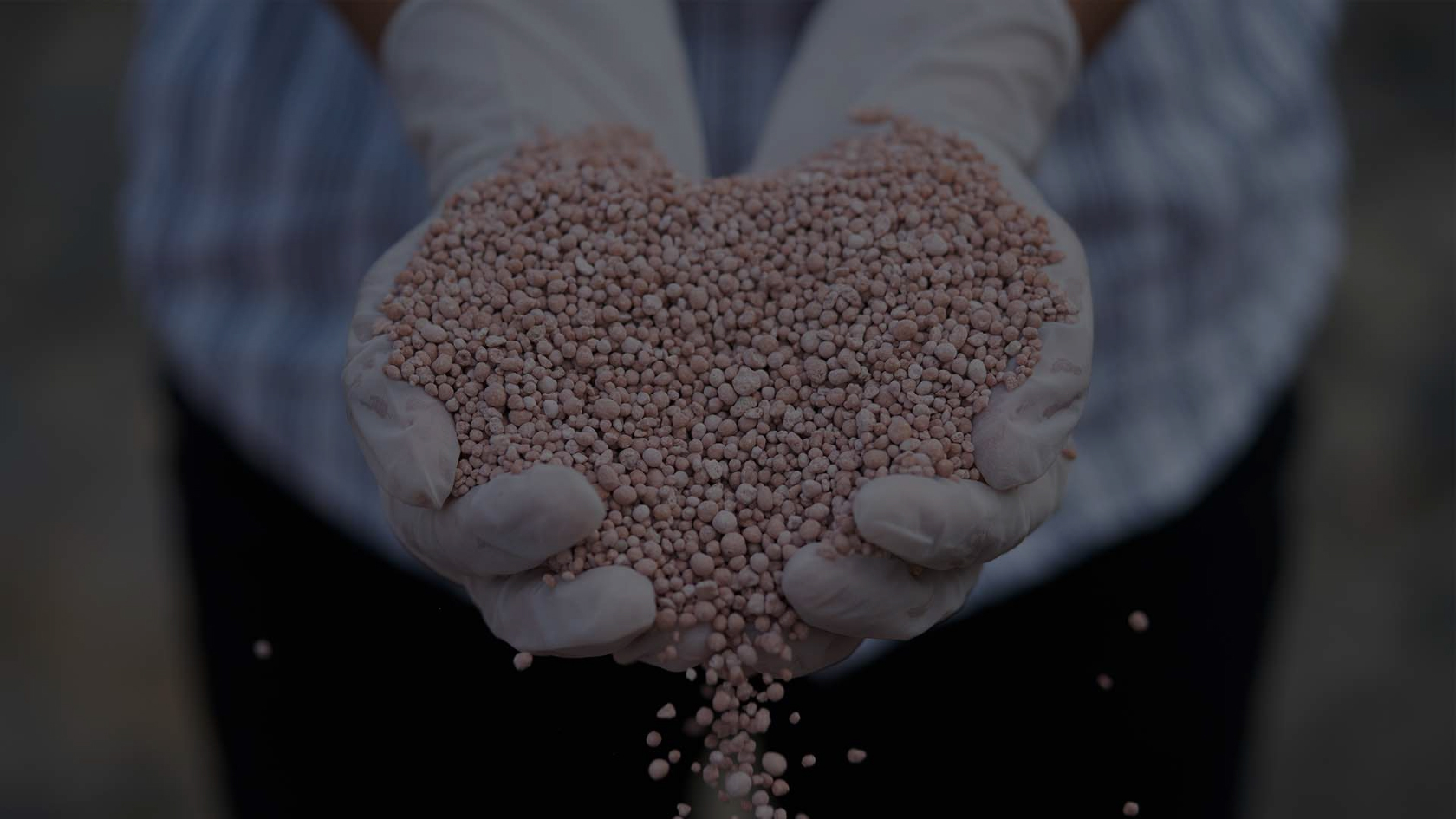No matter the crop or the location in the world, every farmer has the same goal, which is to increase yields. To achieve that, the focus usually goes towards applying NPK fertilizers, but sometimes, the answer to higher productivity is in small doses: the micronutrients. One of them is Boron, and you will get to know a bit more about it in this article. - What you need to know about boron Boron is an essential micronutrient that improves grain development, fruit quality and plays an important part in carbs translocation and the cell wall’s structure. It also participates in cell division, pollen grain germination and pollen tube growth, besides having a big influence on successful flowering.
Knowing what this nutrient is responsible for in plants, its expectable for the demand to be higher during the beginning of the reproduction stage, seeing that it is the moment where structures such as grains, flowers and fruit are developed.
Most crops will meet this boron demand simply from absorbing the nutrient that was released from the organic matter on the soil and it’s now available on the soil solution in the form of boric acid.
However, there are some situations where fertilization is needed to supplement the boron available in the soil:
- Demanding crops
Some crops such as broccoli, sunflower, eucalyptus and vines, need more boron than others and will most probably show signs of the deficiency without some sort of boron application.
- Deficient soils
Boron is usually provided through organic matter and is very mobile on the soil, this is why sandy soils with low organic matter and high leaching will have lower boron available on the soil solution.
- In the occurrence of droughts
This nutrient’s contact with the roots is through mass flow, which means water is essential for it to be absorbed by the plant, so if there is no rain or irrigation for a long period of time, the plant will start to show signs of deficiency.
So, you must be thinking “If boron is so important for the plants, is required in small quantities, and might not always be naturally provided, I should always apply some to ensure higher yields, right?!”. Unfortunately, it is not that simple. The trick when it comes to boron is that the range between deficiency and toxicity is very narrow, and if the amount applied is higher than necessary, there can be a detrimental effect on the yield.
Chemically, this can be explained through the different forms of boron absorption. In high concentrations, the absorption occurs via passive transport, a fast, non-selective and non-metabolic process in which the nutrient is absorbed in the apoplast. When in small concentrations, it occurs via active transport, and the nutrient is slowly absorbed in the symplast through carrier proteins.
This is why farmers should know the boron demands of each crop, and also the quantity available in the soil solution, to effectively determine the ideal rates and methods of fertilization. With the i-Plant Nutrition, by simply uploading soil, water or tissue analysis, we create a fertilization plan for your crop, so you don’t have to worry with boron deficiency or toxicity anymore. - How to identify boron deficiency In spite of its mobility on the soil, boron is extremely immobile in the plants, therefore, once it is incorporated into a tissue, it can’t be remobilized to meet other tissues’ needs. Consequently, the signs of boron deficiency in plants appear on young leaves.
Nevertheless, there are some exceptions, such as almond, apple and nectarine trees. These plants produce polyols that link to boron and allow it to redistribute inside the plant, so the younger tissues won’t show visual signs of deficiency.
Boron deficient plants lose their apical dominance due to the death of the apical meristem, leading to lower growth and deformation of areas of growth, roots and fruits. They also show signs of necrosis of the buds, reduction in leaf expansion, brittle leaves, flower abortion and fruit drop. If your crop shows any of these signs, or a combination of them, it might mean you need to apply boron fertilizers.
Given the fact that boron deficiency and toxicity are just a few “Boron ppm” away, here are some signs of boron toxicity you should be aware of:
-chlorosis of old leaves
-necrosis on old leaves’ tips - Applying boron fertilizers If the soil or tissue analysis has shown a lack of boron, or if the plant has signs of deficiency, it’s time for boron fertilizer application.
There is a big range of products that can be used from several different sources of boron, and to choose the right one for you, their solubility and the amount of boron provided need to be considered.
Some examples of sources of boron that can be used as fertilizers are:
- High Solubility
Borax (11% B)
Boric Acid (17.5% B)
Sodium tetraborate pentahydrate (14,9% B)
Potassium decaborate (18.3% B)
Sodium hexaborate tetrahydrate (20.5% B)
- Low Solubility
Colemanite (9.9 – 15.5 % B)
Ulexite (10.5 – 11.5% B)
Usually, the most soluble forms are the popular choice, except when dealing with sandy soils, which would cause the boron on the soil solution to leach.
Once the fertilizer is chosen, the next step is the application.
There are 3 forms that boron fertilizers can be applied:
1. Foliar application
This is usually the choice for trees, nuts and vegetables. The foliar application provides good uniformity, quick response and uses significantly lower doses if compared to soil fertilization, therefore it is the easiest choice for perennial crops.
Anyhow, this mode of application has some disadvantages. For example, in small plants with small leaf surfaces, if the nutrient demand is high, the absorption can be insufficient. Also, it can cause leaf burn if the saline concentration is high, it has a low residual effect and might need various applications, which can increase the cost.
2. Soil application
Since the doses of boron demanded by plants are small, it is commonly recommended to combine the boron application with other fertilizers, decreasing the cost of application and providing good coverage of the plants.
Giving the nutrient’s immobility in the phloem, the absorption rate for soil fertilization is 3.5 times higher than for foliar fertilization.
3. Fertigation
Another way to provide boron for your crop is through fertigation, which is the most effective to guarantee uniform distribution of the fertilizer.
Regardless of the method you choose to apply boron fertilizers, the i-Plant Nutrition can help you create a unique fertilization plan to ensure that all of your crops’ nutrient requirements are fulfilled. Check out our software here!






